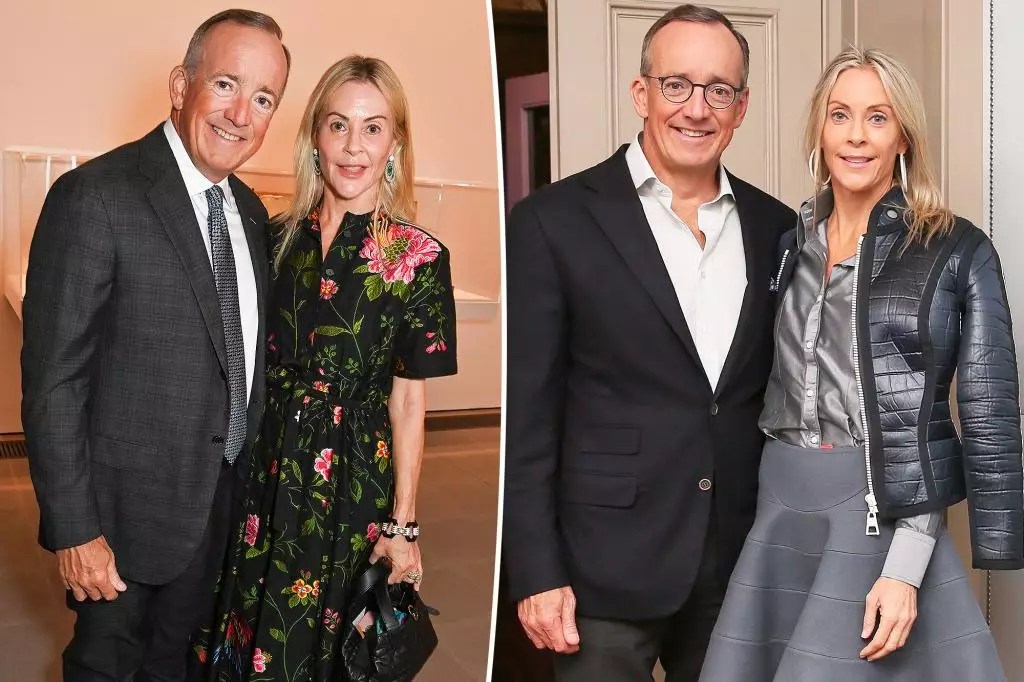In a surprising turn of events, the seemingly picture-perfect marriage between Beau Wrigley, heir to the Wrigley chewing gum fortune, and prominent author and art philanthropist Sue Hostetler has reached an unexpected end. Reports from Palm Beach social circles indicate that the pair’s split has left many in disbelief. Their divorce is not just another high-profile breakup; it echoes through elite circles, where glamour meets personal tumult. This development is bound to stir discussions about the complexities of love intertwined with wealth and public perception.
The Ups and Downs of a Millionaire Marriage
Married for almost four years and dating for several years prior, Wrigley and Hostetler appeared to embody a modern fairytale. However, beneath this facade lies a world fraught with challenges, chiefly Wrigley’s turbulent business ventures, including a scandal involving his cannabis startup, Parallel. With an estimated net worth of $3.4 billion, one would assume that personal relationships would be the last of his worries. Yet, their marriage served as a backdrop for his legal strife, amplifying tensions that might have contributed to their separation.
Interestingly, Hostetler’s active presence in the arts community, alongside her role in various philanthropic endeavors, demonstrates the dichotomy often present in relationships like theirs. While some argue that wealth fosters a sense of security and stability, this split suggests that it can simultaneously create rifts fueled by stressors that are invisible to outsiders.
The Echoes of a Broken Union
In the aftermath of their separation, Hostetler has retreated to a friend’s guest house, signaling that this is more than just a fleeting moment of discontent. Sources close to the couple have expressed shock, revealing a community that celebrated them as a couple dedicated to public service and the arts. In a society often ensnared by capitalism and privileged lifestyles, their split could provide a powerful narrative on the superficial nature of appearances, especially among the elite.
Moreover, the question of whether or not a prenup exists looms over their divorce proceedings. The financial implications can be substantial, especially considering Wrigley’s litigious background and the ongoing fallout from his business dealings. With rumors swirling around possible asset division and disputes, this situation reflects not just a familial breakdown, but also the complexities of merging lives when staggering fortunes are at stake.
Philanthropy and Public Persona
Despite the turmoil, there’s a significant side to their story that involves their philanthropic pursuits through the Hostetler Wrigley Foundation. Their contributions to mental health, reproductive health, and the arts illustrate a commitment to societal betterment, showcasing that even amidst personal chaos, they championed values. Sue Hostetler’s esteemed position in the art community only heightens the façade of a flawless union shattered by reality.
The spotlight on this couple raises pertinent questions about the intersection of love, power, and public image. For onlookers, Wrigley and Hostetler’s marriage served as a symbol of success rooted in societal contributions and wealth accumulation. Yet, the unfolding drama highlights a universal truth: that personal connections require more than status or financial stability; they demand authenticity, communication, and mutual respect, qualities that seem to have waned in their relationship.
In a culture enamored with high-profile relationships, the Wrigley-Hostetler saga serves as a cautionary tale; marriage is as much about maintaining a connection as it is about managing the external pressures of wealth and societal expectations.


Leave a Reply